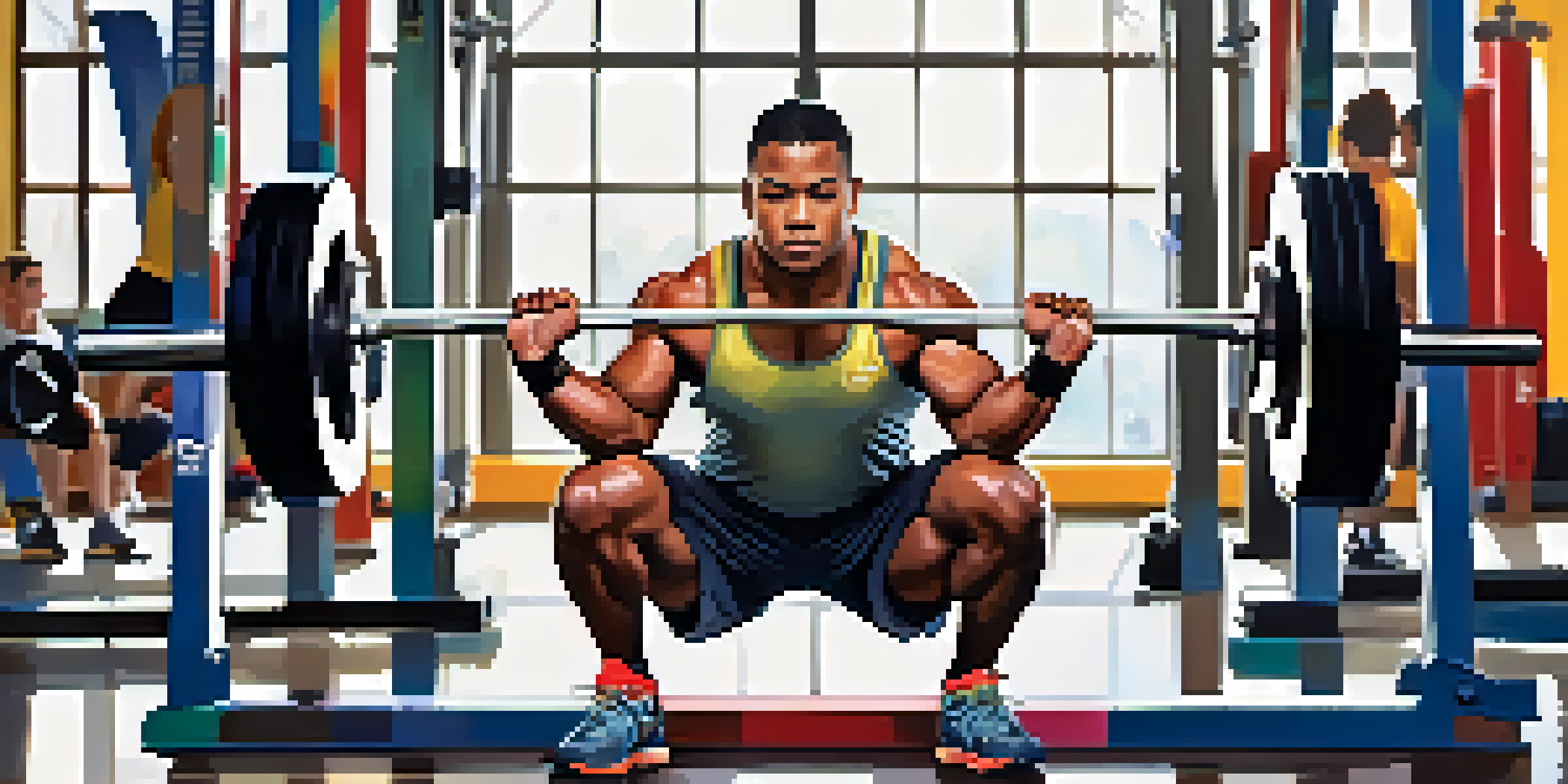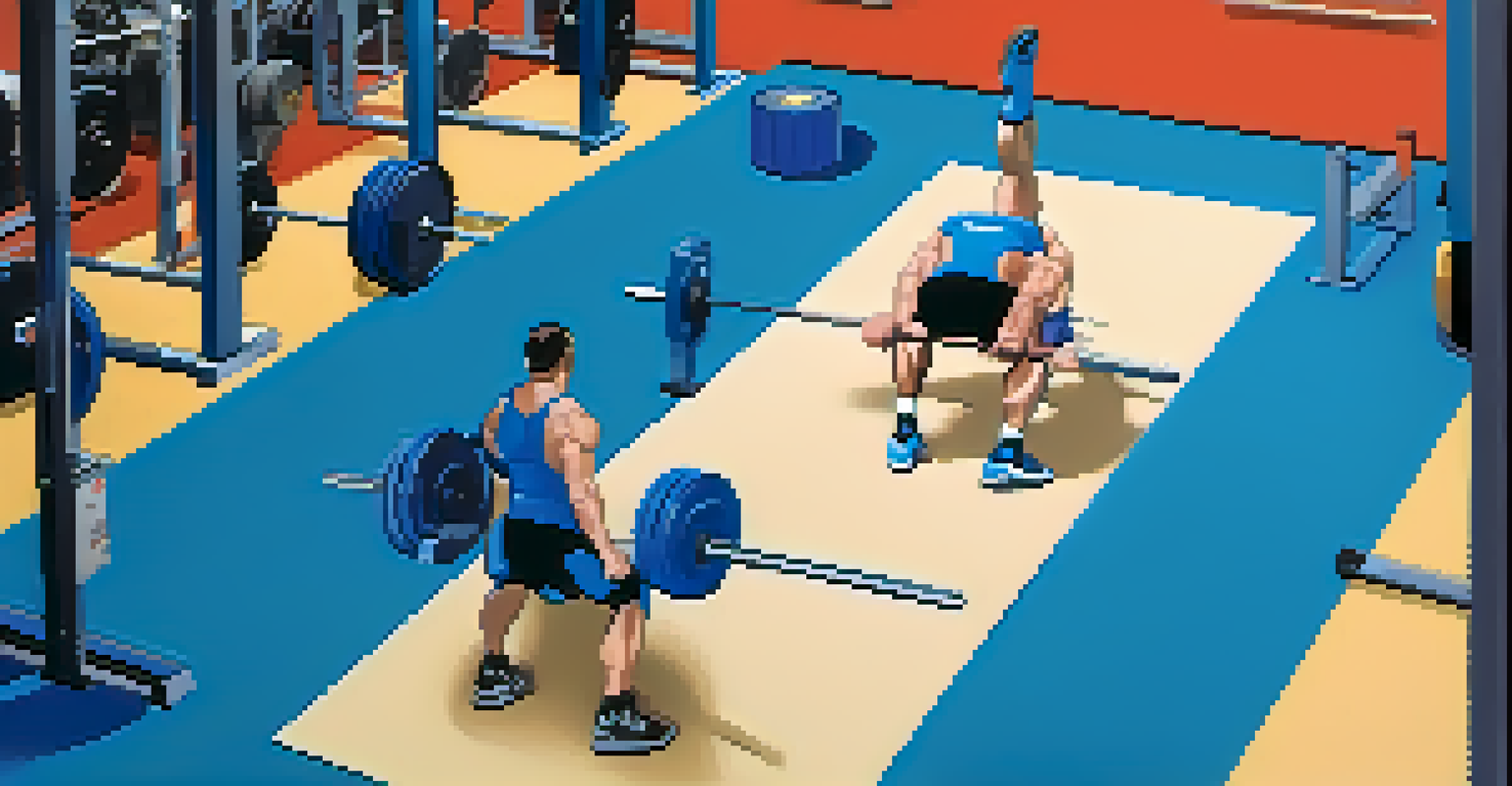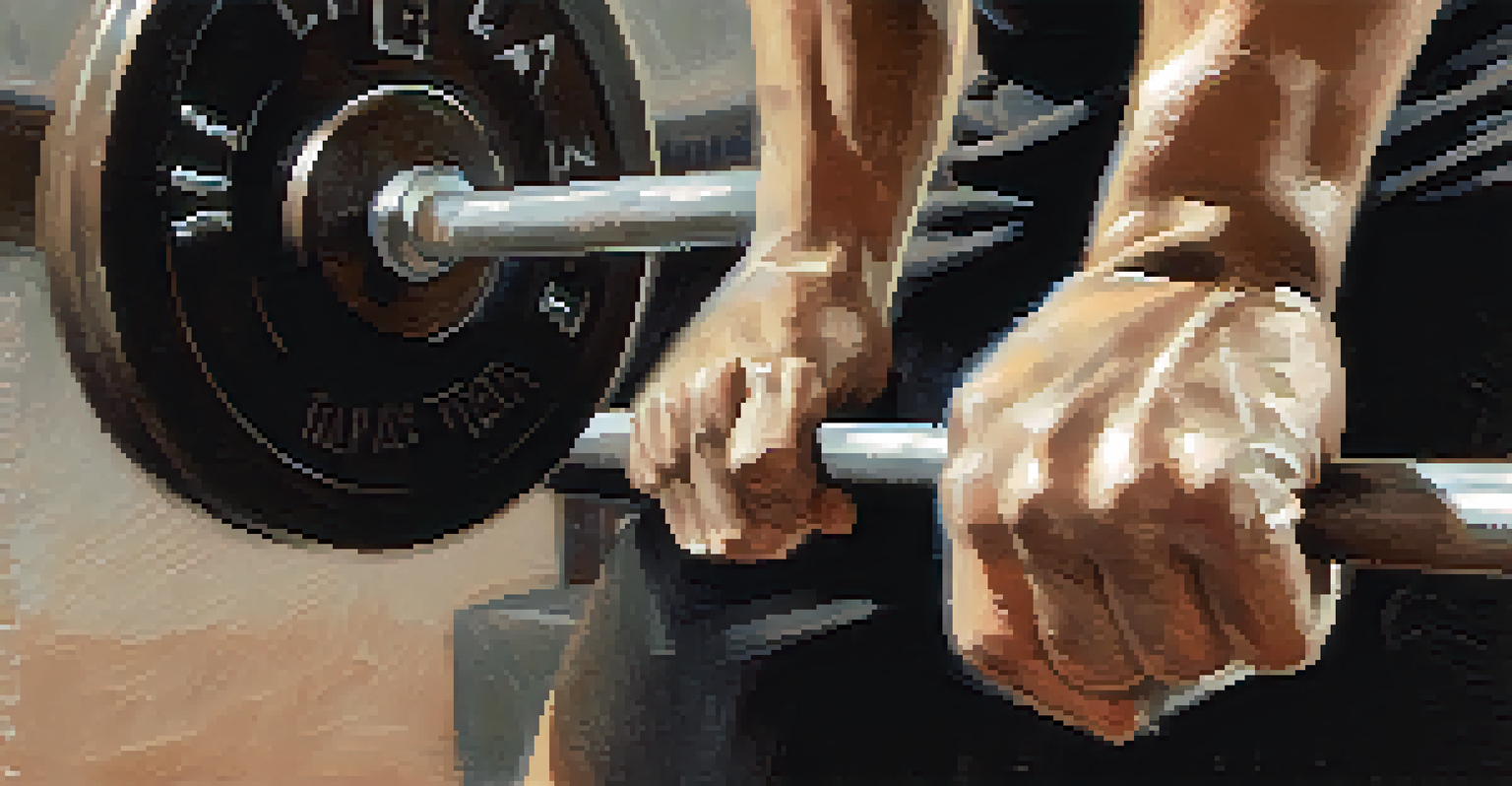The Importance of Warm-Ups in Powerlifting Competitions

Understanding the Purpose of Warm-Ups in Powerlifting
Warm-ups serve as the essential first step in preparing for a powerlifting competition. They help to gradually increase your heart rate and blood flow to the muscles, ensuring that your body is ready for the intense effort ahead. Imagine starting a car on a chilly morning; it needs time to warm up before it can run smoothly.
The more you sweat in training, the less you bleed in battle.
In powerlifting, the goal isn't just to lift heavy weights but to do so effectively and safely. A proper warm-up routine can help reduce the risk of injuries, which can sideline even the most dedicated lifters. By taking the time to warm up, you're investing in your overall performance and longevity in the sport.
Moreover, warm-ups allow athletes to mentally prepare for their lifts. This mental preparation can help improve focus and boost confidence, setting a positive tone for the competition ahead. Just like an athlete visualizes their success, a good warm-up can create a mental framework for a successful lift.
The Physiological Benefits of Warming Up
Warming up increases muscle temperature, which enhances flexibility and elasticity. This is crucial for powerlifters, as it allows for better range of motion during lifts. Think of your muscles as rubber bands; when they’re warm, they stretch more easily, leading to improved performance.

In addition to muscle temperature, warm-ups also activate the nervous system, facilitating better communication between the brain and muscles. This improved coordination can make a significant difference in your lifting technique, helping you to lift more effectively and efficiently.
Warm-Ups Prevent Injuries
A proper warm-up routine reduces the risk of injuries, ensuring lifters can perform effectively and safely.
Furthermore, a good warm-up routine can lead to increased blood flow to the joints, which can help lubricate them for the heavy lifts ahead. This is particularly important in powerlifting, where joints are subjected to significant stress. A well-prepared body is less likely to experience discomfort or pain during competition.
How to Structure an Effective Warm-Up Routine
An effective warm-up routine typically includes dynamic stretches and light cardio to gradually elevate your heart rate. For example, starting with a brisk walk or light jog can help get the blood pumping. Following that up with dynamic movements, like leg swings or arm circles, prepares your muscles for action.
Success is where preparation and opportunity meet.
After the initial cardio, it's beneficial to incorporate specific exercises that mimic the lifts you'll be performing. For instance, if you're preparing for a squat, consider doing bodyweight squats to activate the same muscle groups. This targeted approach ensures that your body is ready for the specific demands of powerlifting.
Lastly, it's essential to gradually increase the weight during your warm-up sets. Start with lighter weights and progressively add more until you reach your competition weight. This method not only warms up your muscles but also helps you practice your technique under progressively heavier loads.
Common Mistakes to Avoid During Warm-Ups
One common mistake is skipping the warm-up altogether due to time constraints. Many lifters believe that they can jump straight to heavy lifts, but this can lead to injuries or subpar performance. Remember, rushing through your warm-up can be counterproductive; it’s better to take the time to prepare than to risk being sidelined later on.
Another mistake is overdoing it during the warm-up. While it's important to prepare your body, doing too much can lead to fatigue before your actual lifts. Finding the right balance is key; your warm-up should energize you, not wear you out.
Boosts Physical and Mental Readiness
Warming up increases muscle temperature and flexibility while also enhancing focus and confidence for lifts.
Lastly, neglecting mobility work can hinder your performance. Powerlifting requires not just strength but also flexibility and range of motion. Incorporating mobility exercises can help ensure that you’re fully primed for the competition.
Listening to Your Body During Warm-Ups
Every lifter is different, and what works for one person may not work for another. It’s essential to listen to your body during your warm-up routine. If something feels off or tight, take the time to address it rather than pushing through the discomfort.
Adjusting your warm-up based on how you feel on that particular day can lead to better performance. Some days you might need more time to warm up, while other days a shorter routine might suffice. Tune in to your body’s signals and adapt accordingly for optimal results.
Moreover, being mindful during your warm-up can help you mentally prepare for the lifts ahead. This awareness can enhance your focus and set a positive mindset, allowing you to approach your lifts with confidence and clarity.
The Psychological Impact of Warm-Ups
Warm-ups are not just about physical preparation; they also play a crucial role in mental readiness. Engaging in a routine that you are familiar with can help ease pre-competition nerves. The predictability of a warm-up can provide a sense of control and focus, which is vital in a competitive environment.
Additionally, warm-ups offer a moment to visualize your performance. This mental rehearsal can boost your confidence and create a stronger connection between your mind and body. Picture yourself successfully completing your lifts; this positive visualization can translate to real-world success.
Personalize Your Warm-Up Routine
Finding the right warm-up structure tailored to individual needs is crucial for optimal performance in powerlifting.
Lastly, sharing a warm-up space with fellow competitors can foster camaraderie and motivation. The shared experience of preparing for competition can help alleviate anxiety and create a supportive atmosphere. After all, powerlifting is not just about individual achievement; it’s also about the community that surrounds it.
Final Thoughts on Warm-Ups in Powerlifting
In conclusion, warm-ups are a critical aspect of powerlifting that should never be overlooked. They not only prepare your body physically but also set the tone for your mental approach to competition. A solid warm-up can be the difference between a successful lift and a disappointing attempt.
As you refine your warm-up routine, remember that it should be personalized to fit your needs and preferences. Experiment with different exercises and structures until you find what works best for you. The key is to be consistent and intentional with your preparation.

Ultimately, the time you invest in a proper warm-up will pay off on the platform, helping you reach new personal bests and enjoy the process of powerlifting even more. So, take a deep breath, embrace the warm-up ritual, and prepare to conquer your lifts!